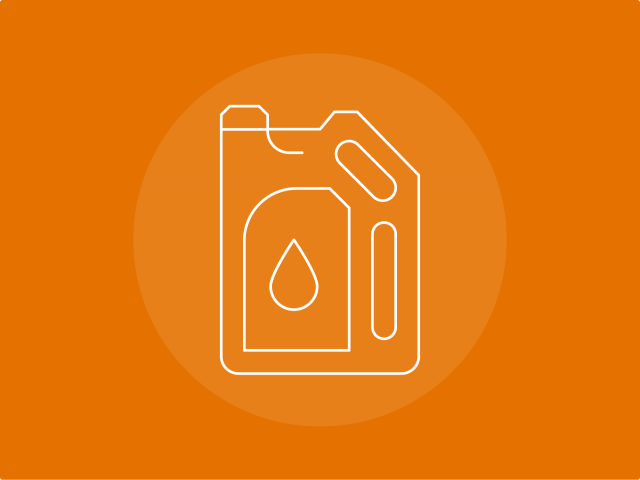

 Article
Article

 Why would oil producers continue to pump oil despite an excess supply globally and a shortage in storage space? Darden Professors Elena Loutskina and Daniel Murphy examine how oil prices went negative (and could again), collateralized debt and oil producers’ relationships with lenders, and broader implications for the oil market.
Why would oil producers continue to pump oil despite an excess supply globally and a shortage in storage space? Darden Professors Elena Loutskina and Daniel Murphy examine how oil prices went negative (and could again), collateralized debt and oil producers’ relationships with lenders, and broader implications for the oil market.

On 20 April 2020, something unprecedented happened: Oil prices went negative. While oil prices had been trading low for weeks, reduced demand from a country on stay-at-home orders, combined with other factors, forced investors to pay people to take delivery of oil, rather than reaping their anticipated profit.
Negative oil prices constitute as dire an issue for oil producers as it sounds: This was the first time the U.S. had seen negative oil prices. Prices did rebound by the end of the day on 20 April, but with the global market awash in excess oil and storage space in short supply, a negative dip in prices could happen again. Julian Lee, an oil strategist for Bloomberg, described the situation this way: “Unless producers start cutting supply much more aggressively [than they already are], another bout of negative prices will have to jolt them into action.”
However, cutting production might not be as simple as it sounds. Two Darden professors, Elena Loutskina and Daniel Murphy, explain why oil producers might continue to pump oil, despite the current conditions.
While the negative oil prices of 20 April are unprecedented, dramatic changes in demand and price are not. In 2014, oil prices in the United States plummeted from over $100 a barrel in June to half of that by the end of the year. But the low oil price was not expected to last. As of late 2014, six-month futures prices (the price of an oil contract to deliver oil six months in the future) were 15 percent higher than the current spot price of oil, suggesting that oil prices were expected to rise again.
In the United States, most oil production comes from shale oil and is extracted through hydraulic fracturing, or fracking. Each fracking well produces oil for a relatively short period of time (two to three years), and the greatest value of the well is typically extracted within the first year. This means that if an oil and gas company wants to reduce its production volume, it can delay opening new fracking wells. In June 2014, these companies faced declining oil prices along with very lucrative futures prices. Thus, delaying the opening of new wells almost guaranteed higher prices in the future.
Unsurprisingly, the majority of producers chose to delay initiating new production by three months on average. After all, holding oil in the ground is the cheapest way to store it. But what was surprising is that not all firms followed suit. A group of oil producers maintained high oil production even in the face of expected oil price appreciation. As a result, the oil production did not decline dramatically, and oil prices lingered at the much lower level for another year.
Why would some oil producers continue production when it would be more profitable to delay? A one-month delay in opening a fracking well mid-2014 could have brought about a 4.8 percent increase per project. That would have amounted to an estimated $124,000 in net present value at the time — that is, the additional money it would later have brought in, adjusted for mid-2014.
To answer this question, Darden Professors Elena Loutskina and Daniel Murphy, along with their co-author Erik Gilje, explored the role of oil producers’ contracts with bank lenders based on the notion that high-debt borrowers were the most likely to need to utilize bank lines of credit. They show that producers that continued pumping oil were primarily those with high levels of debt.
Why would the companies make such decisions? The answer is tied to how firms finance the expansion of their operations: collateralized debt. Collateral is a great tool that helps creditors manage their credit risk exposure and aids borrowers in lowering their cost of debt. For oil producers, collateral is the underground oil that can be extracted and sold. The more certainty the lender has about the quality of the collateral, the better credit conditions it can offer to the borrower. As oil wells move from geological survey, to pre-drilling, to drilled status, to fracked status, banks assign higher collateral values to the reserves this well represents.
Loutskina and Murphy found that high-debt oil producers tended to continue producing oil when they needed to demonstrate their collateral values and expand their access to credit, despite the low price. Companies accelerated new well openings just before they renegotiated their debt contract with lenders. Specifically, they opened high-volume well or wells that provided the lender with the most information about the firm’s other shale reserves. These actions improved the collateral values assigned by the lender and lowered the borrower’s cost for existing and new debt. Bottom line, these highly-leveraged oil and gas firms were forgoing high revenues on their oil production to lower their cost of debt.
Banks encourage this behavior because it reduces their risk. If banks were fully informed about the quality of the oil reserves their borrowers held underground, then banks and oil-producing borrowers could renegotiate their contracts so that lenders and borrowers could all benefit from the future expected rise of the price of oil. But banks do not always know whether their clients are creditworthy or would act in the best interest of the lender. Collateral acts as a binding mechanism to force borrowers to act prudently.
Loutskina and Murphy show that the relationship between oil producers and lenders can have an important impact on the oil market. A drop in the price of oil should signal to oil producers to reduce extraction. However, when high-debt oil producers need to demonstrate their capacity to produce oil, in order to reassure their lender, the need to access capital on favorable terms overrides the signals from the larger oil market.
Loutskina and Murphy offer several implications of this research for the current oil market.
Elena Loutskina and Daniel Murphy co-authored “Drilling and Debt,” which appeared in The Journal of Finance, with Erik P. Gilje of the University of Pennsylvania Wharton School.
Loutskina is an authority on banking and securitization. She researches corporate financing, venture capital and innovation, and earnings management.
Her main research focus is on the impact of the securitization markets on the financial management of financial and nonfinancial corporations. Loutskina also explores the role of corporate venture capitalists in increasing the value of entrepreneurial firms. She has been invited to present her research at the Federal Reserve System, Federal Reserve Board, International Monetary Fund, European Central Bank and Banque de France.
Loutskina’s most recent papers in top finance journals include “Corporate Venture Capital, Value Creation and Innovation” (with Thomas J. Chemmanur and Xuan Tian) in the Review of Financial Studies and “Financial Integration, Housing and Economic Volatility”(with Philip E. Strahan) in the Journal of Financial Economics.
B.S., Belarus State University; M.S., Stat University of New York; Ph.D., Boston College
An expert in economics and public policy, Murphy researches the nature of consumer demand and its implications for market outcomes. His work addresses international issues and macroeconomics, including the determinants of cross-country price differences, the causes of fluctuations in the price of crude oil and the consequences of asymmetric economic growth.
Prior to joining Darden’s Global Economies and Markets area in 2013, Murphy was a National Hunger Fellow and research associate at the Urban Institute.
B.S., University of Notre Dame; M.A., Ph.D., University of Michigan
Drilling and Debt: When Oil Production Doesn’t Respond to Demand